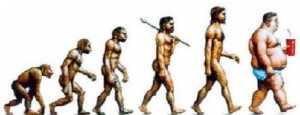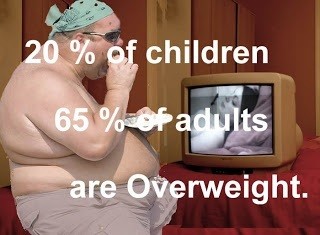What Paleo Diet is and why to consider it?
 The paleolithic diet is a modern nutritional plan which is based on the assumptions of what ancestral human diet was like: wild plants and animals. It was presumably cnsumed by humands of Paleolitic Period (sometimes reffered to as caveman diet) which lasted appfoximately from 2.5 million years to 10,000 years ago until agricultural development introduced grains to human’s diet. Paleolithic nutrition is based on the premise that modern humans are genetically adapted to the diet of their Paleolithic ancestors and that human genetics have barely changed since the dawn of agriculture, and therefore an ideal diet for human health and well-being is one that closely resembles this ancestral diet.
The paleolithic diet is a modern nutritional plan which is based on the assumptions of what ancestral human diet was like: wild plants and animals. It was presumably cnsumed by humands of Paleolitic Period (sometimes reffered to as caveman diet) which lasted appfoximately from 2.5 million years to 10,000 years ago until agricultural development introduced grains to human’s diet. Paleolithic nutrition is based on the premise that modern humans are genetically adapted to the diet of their Paleolithic ancestors and that human genetics have barely changed since the dawn of agriculture, and therefore an ideal diet for human health and well-being is one that closely resembles this ancestral diet.
Although it is difficult to determine the complete caveman’s diet in details, the today’s Paleolithic diet allows mainly sea food, grass-fed pasture raised meats, eggs, vegetables, fruit, fungi, roots, and nuts, whereas grains, legumes, dairy products, potatoes, refined salt, refined sugar, and processed oils are excluded. Note, that the diet is lacking calcium and therefore it needs to be added as a supplement.
It also worth noting that the number of plant species which nourish modern humanity is remarkably limited. Most of the 195,000 species of flowering plants produce edible parts which could be utilized by man; however less than 0.1% or fewer than 300 species are used for food. Approximately 17 plant species provide 90% of mankind’s food supply, of which cereal grains supply far and away the greatest percentage. See PDF file Cereal Grains: Humanity’s Double-Edged Sword for reference.
Paleolithic Diet and Heartburn
Eating a Paleolithic diet may be beneficial or detrimental to your health because heartburn, or acid reflux, is known to be caused sometimes by changes in your diet.
Over time, the human diet has changed from fruits, vegetables and lean meats to processed foods with almost no fiber and high amounts of salt. Such dietary changes have led to obesity epidemic. Excess weight can put pressure on your abdomen, which can push stomach contents into your esophagus and cause heartburn. Weight loss from physiological improvements provided by a Paleolithic diet may prevent weight-induced heartburn. Onions, citrus fruits and tomatoes accepted in a Paleolithic diet can be high risk triggers if you suffer from heartburn. Each person’s list of heartburn triggers can be different. Tomatoes in one person’s Paleolithic diet may cause heartburn, while in another they may not.
Paleo Diet is good for people with diabetes
 In a clinical study, 14 patients who were advised to consume an ‘ancient’ (Paleolithic, ‘Old stone Age’) diet for three months were compared with 15 patients who were recommended to follow a Mediterranean-like diet with whole-grain cereals, low-fat dairy products, fruit, vegetables and refined fats generally considered healthy. All patients had increased blood sugar after carbohydrate intake (glucose intolerance), and most of them had overt diabetes type 2. In addition, all had been diagnosed with coronary heart disease. Patients in the Paleolithic group were recommended to eat lean meat, fish, fruit, vegetables, root vegetables and nuts, and to avoid grains, dairy foods and salt.
In a clinical study, 14 patients who were advised to consume an ‘ancient’ (Paleolithic, ‘Old stone Age’) diet for three months were compared with 15 patients who were recommended to follow a Mediterranean-like diet with whole-grain cereals, low-fat dairy products, fruit, vegetables and refined fats generally considered healthy. All patients had increased blood sugar after carbohydrate intake (glucose intolerance), and most of them had overt diabetes type 2. In addition, all had been diagnosed with coronary heart disease. Patients in the Paleolithic group were recommended to eat lean meat, fish, fruit, vegetables, root vegetables and nuts, and to avoid grains, dairy foods and salt.
The main result was that the blood sugar rise in response to carbohydrate intake was markedly lower after 12 weeks in the Paleolithic group (–26%), while it barely changed in the Mediterranean group (–7%). At the end of the study, all patients in the Paleolithic group had normal blood glucose. Look into the most striking latest report: Forget Paleo – We’re All About Neolithic Diet.
Here is more reading on the Paleo Diet: The Paleo Diet Works! and What is Paleo Diet And Why You Should Consider Giving It a Try?. Also look into the most striking latest report: Forget Paleo – We’re All About Neolithic Diet.
Category: Healthy diet







Some Paleo dieters emphasize that they never believed in one true caveman lifestyle or diet and that—in the fashion of Sisson’s Blueprint—they use our evolutionary past to form guidelines , not scripture. That strategy seems reasonably solid at first, but quickly disintegrates. Even though researchers know enough to make some generalizations about human diets in the Paleolithic with reasonable certainty, the details remain murky. Exactly what proportions of meat and vegetables did different hominid species eat in the Paleolithic? It’s not clear. Just how far back were our ancestors eating grains and dairy? Perhaps far earlier than we initially thought. What we can say for certain is that in the Paleolithic, the human diet varied immensely by geography, season and opportunity. “We now know that humans have evolved not to subsist on a single, Paleolithic diet but to be flexible eaters, an insight that has important implications for the current debate over what people today should eat in order to be healthy,” anthropologist William Leonard of Northwestern University wrote in Scientific American in 2002.
Yes, you comment is very reasonable. Thank you. I am not a paleolithic diet follower, and, you are right, the details of the diet cannot be fully known. But one thing is fully clear to me: To be healthy, Americans need at least to reject so many food surrogates (the “dye diet”) that are loaded with strange chemical additives. To help, I offer the Dye Diet Calculator http://www.dyediet.com/2013/06/12/dye-diet-calculator/what-the-dye-diet-calculator-can-do-for-you/
If you want SCIENCE based ancestral diet information I would suggest reading the PHD Diet (http://perfecthealthdiet.com/the-diet/). Anyone can site references to “Fit” there opinion, but these two researchers have establish a strong foundation in food consumption based on science and nutritional needs.
I would like to point out, we do have validated evidence of what ancient man was eating (tooth analysis by mass spectrometry has been doing an amazing job at identifying what people ate and in what proportions). But we have just scratched the surface-there is so much more to learn.
Just stay away from corn, the high sugar content will rot your teeth!
http://www.statemuseum.arizona.edu/research/tooth_decay_mummies.shtml
You may want to check out the November 30, 2010 study published in the journal Nutrition and Metabolism, ” A paleolithic diet is more satiating per calorie than a Mediterranean-like diet in individuals with ischemic heart disease. ” Nutrition and Metabolism (London) 2010.
Oh, great! Thank you for the reference.
Sure, to eat a lot of hamburgers, you’ll get
fat, but to eat a lot of broccoli, you’re going to shed
weight. This could lead you to eating more, so turn it into a
habit to keep yourself hydrated after meal or even a glass
before meal. It is likely to make your stomach more filling and
keeps you against feeling hungry quickly. If you combine 25 to 45 minutes of exercise at least three times weekly your metabolism will continue active and you will probably burn off extra calories.
Now transitioning that i can using raw foods was
almost instant and I know that some people would prefer to transition less quickly
which is fine.